6 Best Automatic Speech Recognition (ASR) Tools in 2024
Discover the best speech recognition software in 2024 to streamline workflows, boost accuracy, and automate transcription effortlessly.
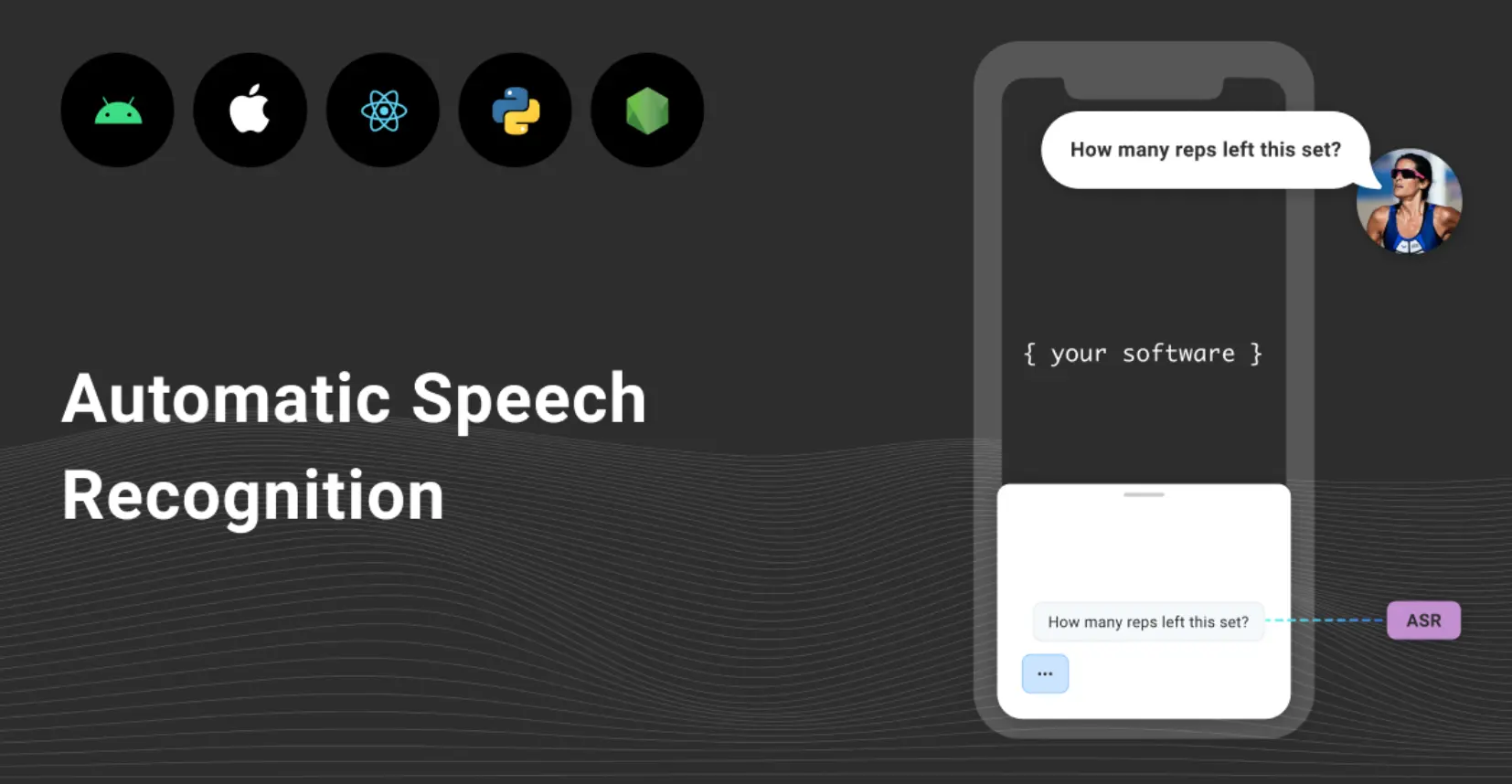
Automatic speech recognition is a technology that helps the application understand conversations happening and convert them into text or commands to give program commands to generate specific output.
In this article, we'll try to understand the technology, its uses and best tools in the market that help programmers and engineers to build this efficiently and faster.
Table of Contents
- What is Speech Recognition?
- Benefits of Speech Recognition Tools
- Labellerr
- Google Cloud Speech-to-Text
- Deepgram
- Kaldi
- Simon
- Express Scribe
- Mozilla
- Conclusion
- Frequently Asked Questions
What is Speech Recognition?
Speech recognition technology is a groundbreaking innovation that empowers systems to comprehend spoken language input, enabling machines to recognize and interpret words and phrases, and subsequently convert them into machine-readable formats.
It entails the development of computer programs specifically engineered to decipher human speech input, analyze its linguistic components, and accurately transcribe it into written text.
Benefits of Speech Recognition Tools
1. Streamlined Business Processes
Speech recognition tools play a pivotal role in modernizing and optimizing business operations by automating various tasks and processes.
By seamlessly integrating speech recognition capabilities into their workflows, companies can streamline data entry, documentation, and communication processes.
For instance, during phone calls, these tools can instantly provide insights into ongoing conversations, facilitating prompt decision-making and enhancing overall operational efficiency.
2. Cost Efficiency
One of the most significant advantages of speech recognition tools lies in their cost-effectiveness.
Compared to manual transcription methods, which often entail significant time and labor costs, speech recognition software offers a more efficient and economical solution.
By automating the process of speech recognition and transcription, these tools can perform tasks faster and more accurately than human counterparts, resulting in lower costs per minute of transcription.
Moreover, the scalability and efficiency of speech recognition technology translate into long-term cost savings for businesses across various industries.
3. Enhanced Accuracy and Speed
Speech recognition tools leverage advanced algorithms and machine learning techniques to accurately transcribe spoken language into text with remarkable precision.
By harnessing the power of artificial intelligence and natural language processing, these tools can effectively decipher diverse accents, dialects, and speech patterns, ensuring high-quality transcription outputs.
Moreover, the real-time nature of speech recognition enables users to rapidly capture and transcribe spoken content, facilitating swift decision-making and response times in dynamic business environments.
4. Accessibility and Ease of Use
Accessibility is another key benefit of speech recognition tools, as they are readily available and user-friendly.
Many speech recognition software solutions come pre-installed on computers, smartphones, and other devices, making them easily accessible to users.
Furthermore, these tools typically offer intuitive interfaces and customizable settings, allowing users to tailor the software to their specific needs and preferences.
As a result, individuals across diverse industries and skill levels can leverage speech recognition technology to enhance their productivity and communication capabilities.
Speech recognition tools offer a multitude of benefits, ranging from improved operational efficiency and cost savings to enhanced accuracy and accessibility.
By harnessing the power of cutting-edge technology, businesses can leverage speech recognition solutions to streamline workflows, boost productivity, and stay ahead in today's digital world.
Here's the list of tools:
1. Labellerr
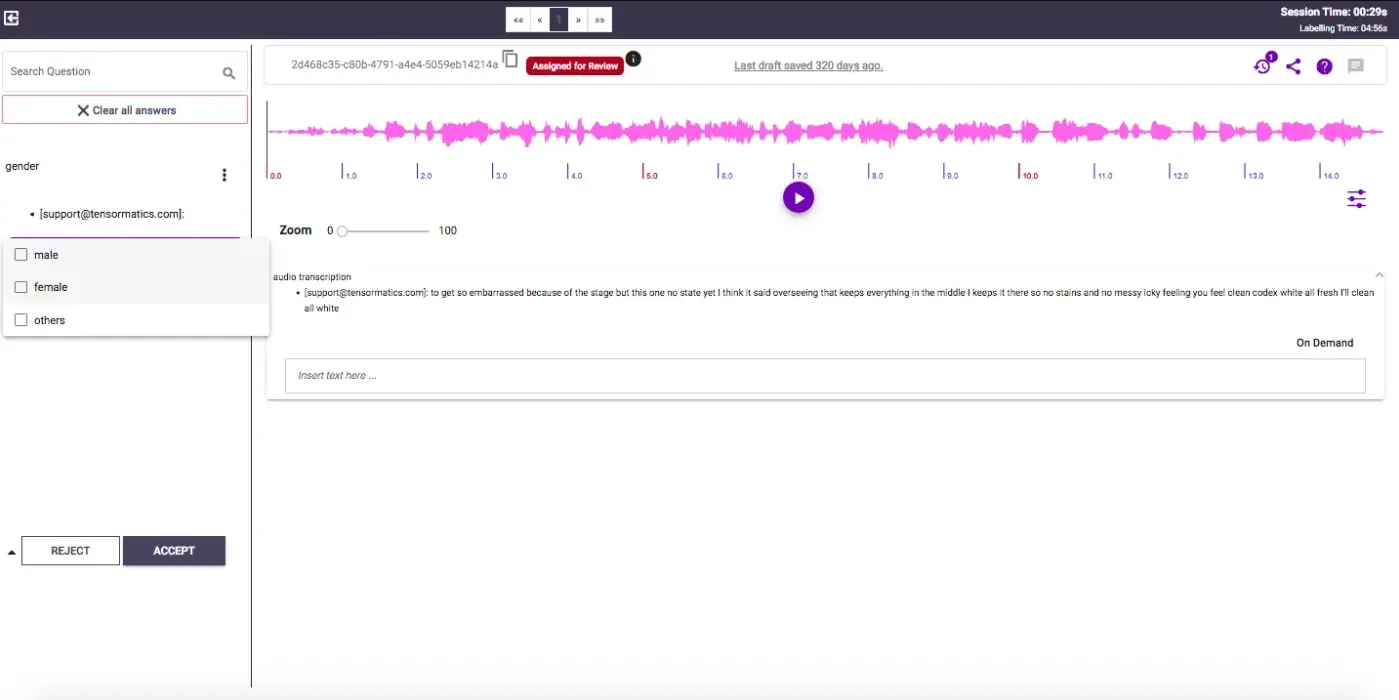
Labellerr is not only a versatile audio annotation tool but also serves as a robust Automatic Speech Recognition (ASR) tool, empowering users to enhance the accuracy and efficiency of speech-to-text transcription tasks.
Here's how Labellerr transforms into an ASR tool:
(i) User-Friendly Interface: Labellerr offers an intuitive interface tailored for ASR tasks, facilitating easy navigation and efficient labeling of audio segments for transcription.
(ii) Audio Format Support: Supporting various audio formats like MP3, WAV, and FLAC, Labellerr accommodates a wide range of audio data, ensuring compatibility with different speech sources and environments.
(iii) Precise Labeling: With advanced annotation features, Labellerr enables users to add accurate timestamps, labels, and metadata to audio segments, crucial for training ASR models with precisely labeled data.
(iv) Collaborative Functionality: Labellerr fosters teamwork by allowing multiple annotators to work concurrently on transcription projects, facilitating faster turnaround times and improved accuracy through collaborative efforts.
(v) Integration and Compatibility: Seamless integration with other tools and platforms ensures smooth data import/export processes, enhancing compatibility with various ASR frameworks and systems.
(vi) Versioning and History Tracking: Labellerr maintains a detailed history of annotations, supporting version control and enabling users to track changes made during the transcription process, ensuring data integrity and accountability.
(vii) Security and Privacy: Labellerr prioritizes the security and privacy of sensitive audio data by implementing robust encryption measures, user access controls, and compliance with relevant privacy regulations, safeguarding confidential information throughout the ASR workflow.
(viii) Scalability and Performance: Equipped to handle large audio datasets efficiently, Labellerr maintains optimal performance even under increased workloads, ensuring seamless ASR processing for diverse applications.
With its comprehensive feature set tailored for ASR tasks, Labellerr emerges as a reliable and versatile tool for training and fine-tuning ASR models, empowering users to achieve superior speech-to-text transcription accuracy and performance.
2. Google Cloud Speech-to-Text
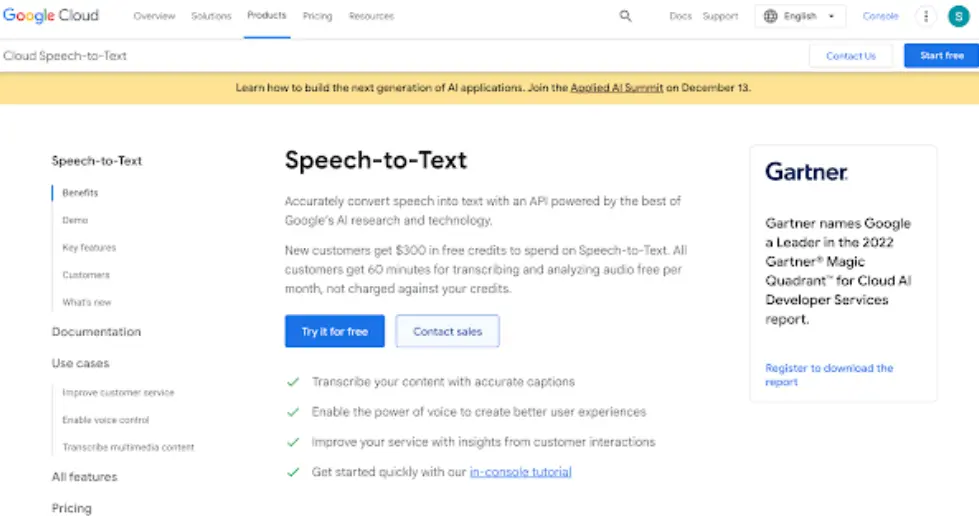
Google Cloud Speech-to-Text is an advanced tool designed to transcribe spoken words into written text.
It excels in accurately converting voice recordings, even in noisy environments and diverse accents, enhancing communication accessibility for all users.
Key Features
1. Application programming interface (API) facilitates easy integration with various applications, enabling seamless transcription of audio.
2. Integration with existing applications streamlines the transcription process.
3. Text summarization condenses lengthy documents into concise summaries, enhancing efficiency.
Pricing
Offers a free trial with 60 minutes of transcription and analysis, along with $300 free credits for new customers.
Paid plans are based on monthly usage.
User Feedback
Positive: Users praise Google Cloud Speech-to-Text for its exceptional accuracy and versatility.
Its scalability and reliability are highlighted, as it effortlessly handles varying workloads without compromising quality, making it suitable for businesses of any size.
Negative:
Some users report difficulties with Indian accents, but overall, no major issues are reported.
3. Deepgram
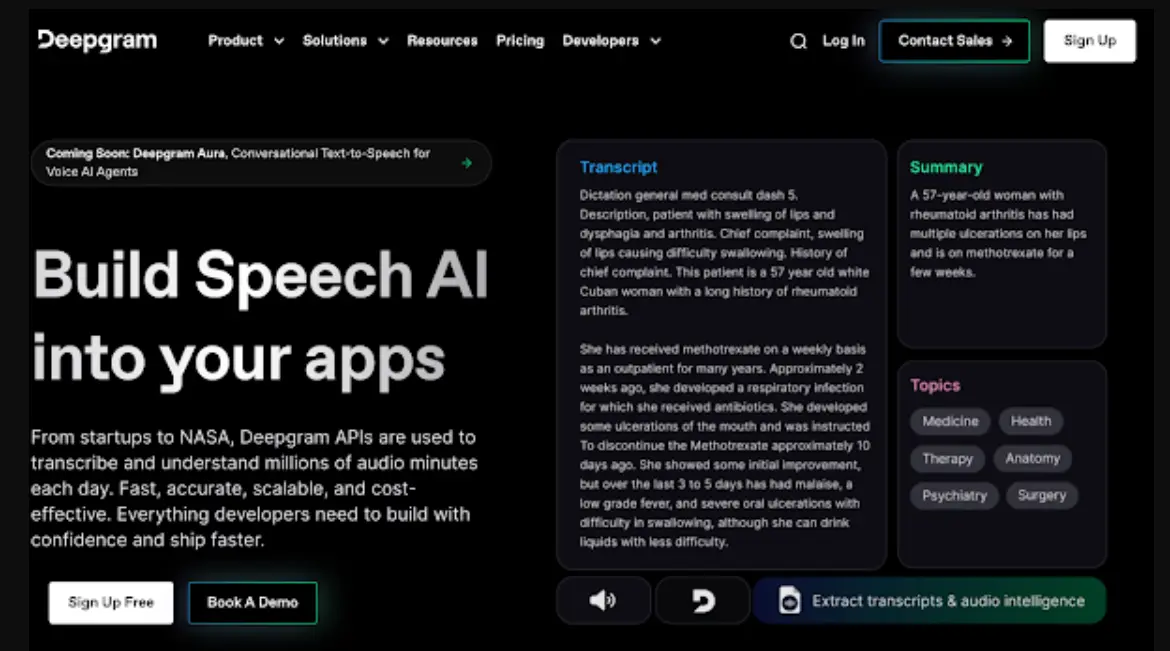
Deepgram is a powerful tool designed to accurately transcribe spoken language into written text, even if it has varying accents.
It boasts impressive capabilities in swiftly processing extensive volumes of audio data, making it particularly suitable for businesses requiring transcription of calls, meetings, or customer interactions.
The company is dedicated to advancing the understanding of human language.
Key Features
1. Transcription Speed: Capable of transcribing live or pre-recorded audio almost in real-time.
2. Multi-lingual Support: Understands and transcribes text in over 30 languages, catering to diverse linguistic needs.
3. Accuracy: Provides transcriptions with over 90% accuracy, ensuring reliability in text conversion.
Pricing
Offers a free Pay As You Go plan with a $200 credit.
Growth Plan: Priced between $4,000 and $10,000 annually.
Enterprise Plan: Pricing is available upon request. Interested users can contact the Deepgram team for detailed information.
User Feedback
Positive:
Users commend Deepgram for its crucial role in projects requiring accurate real-time transcription, such as providing translations during events.
Its ease of integration, configuration, and multilingual support are highlighted as significant advantages, contributing to project success.
Negative:
Some users express a desire for Deepgram to include the ability to transcribe video calls in real time using their API.
However, overall, Deepgram is considered a reliable choice for speech-to-text needs.
4. Kaldi

Kaldi is a freely available, open-source speech recognition software tool licensed under the Apache License.
Originating from a workshop at Johns Hopkins University in 2009, it was developed to achieve high-quality speech recognition for new languages and domains at low development costs.
The initial release of Kaldi's code occurred on May 14, 2011, following several years of project development. It quickly gained recognition for its user-friendly nature.
Written primarily in C++, Kaldi is used mainly for research in acoustic modeling.
Key Features
1. Supports full covariance structures and Gaussian mixture modules, including MMI (Maximum Mutual Information) and boosted MMI.
2. Integrates code-level with Finite State Transducers (FSTs) against the OpenFst toolkit.
3. Provides tools for converting Language Models (LMs) in the standard ARPA format to FSTs.
4. Utilizes a matrix library wrapping standard Basic Linear Algebra Subroutines (BLAS) and Linear Algebra Package (LAPACK) routines, supporting general linear algebra.
5. Features an extensible design with space for discriminative training.
6. Offers comprehensive recipes and deep neural networks for enhanced performance.
7. Implements Maximum Likelihood Linear Regression (MLLR) for model-space adaptation and feature-space MLLR for feature-space adaptation.
Kaldi's versatility, along with its robust feature set and support for various adaptation techniques, makes it a valuable tool in Automatic Speech Recognition.
5. Simon
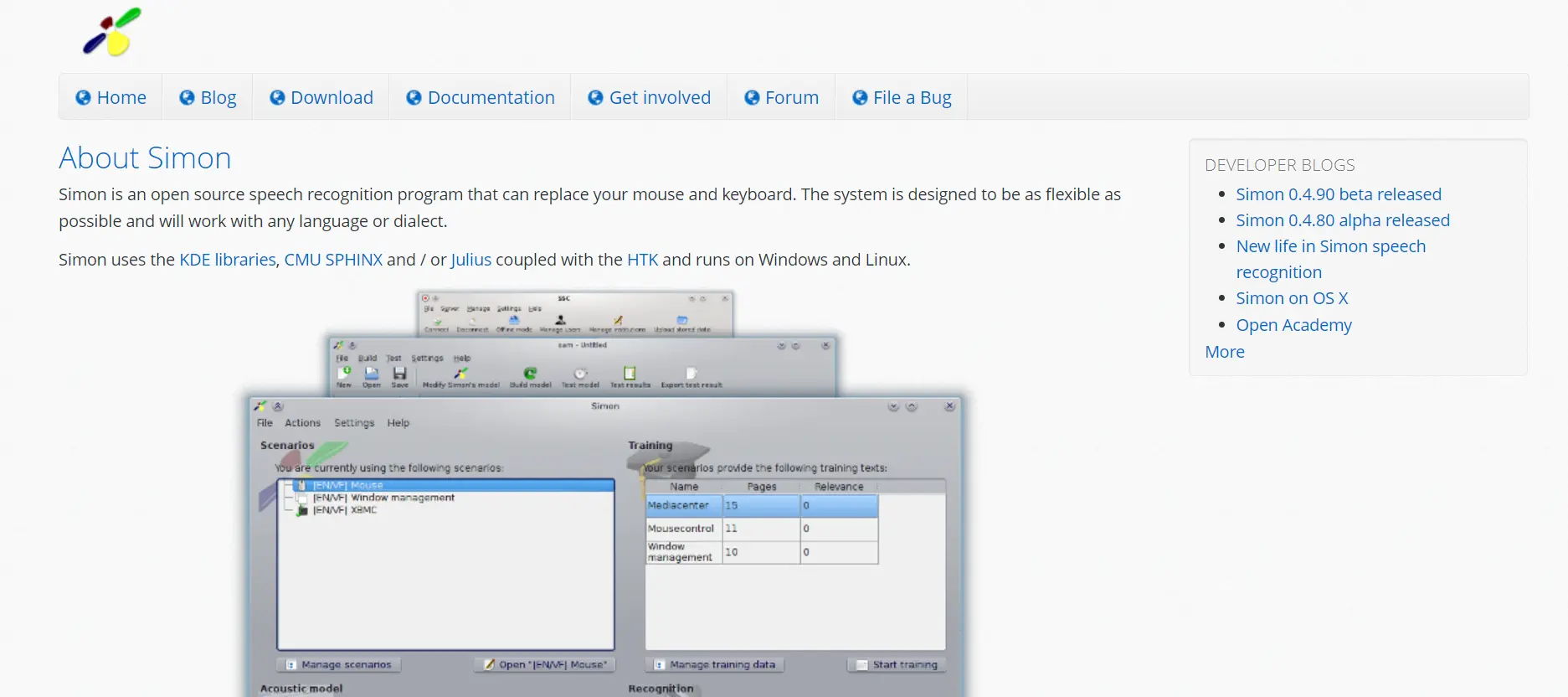
Simon is a highly adaptable speech recognition software tool renowned for its versatility and availability as a free and open-source solution.
It offers extensive customization options for any application requiring speech recognition, irrespective of dialect or language.
Notably, Simon can replace traditional input devices like the mouse and keyboard.
Utilizing KDE libraries, CMU SPHINX or Julius, along with the HTK, Simon is compatible with both Windows and Linux operating systems.
It enables users to perform various tasks such as opening URLs and programs, typing configurable text snippets, controlling the mouse and keywords, and simulating shortcuts.
Simon's capabilities extend to converting audio into text and facilitating voice commands, offering users a hands-free interaction experience with their computers.
Key Features
1. Executes a wide range of commands based on user input, receiving information from the server Simond.
2. Particularly suitable for command-and-control solutions catering to users with disabilities.
3. Language-agnostic architecture allows the same version of Simon to support all languages and dialects, with the option to mix languages within a single model.
4. It employs a user-friendly interface for a do-it-yourself approach to speech recognition, enabling easy creation of language and acoustic models from scratch.
5. Facilitates sharing and downloading of established use cases among users, fostering a collaborative community.
6. Controls various software applications, including web browsers, media centers, and email clients, using simple voice commands such as "left," "right," "ok," and "stop."
Simon stands out as a comprehensive ASR tool, offering robust functionality and ease of use for diverse speech recognition needs.
6. Express Scribe
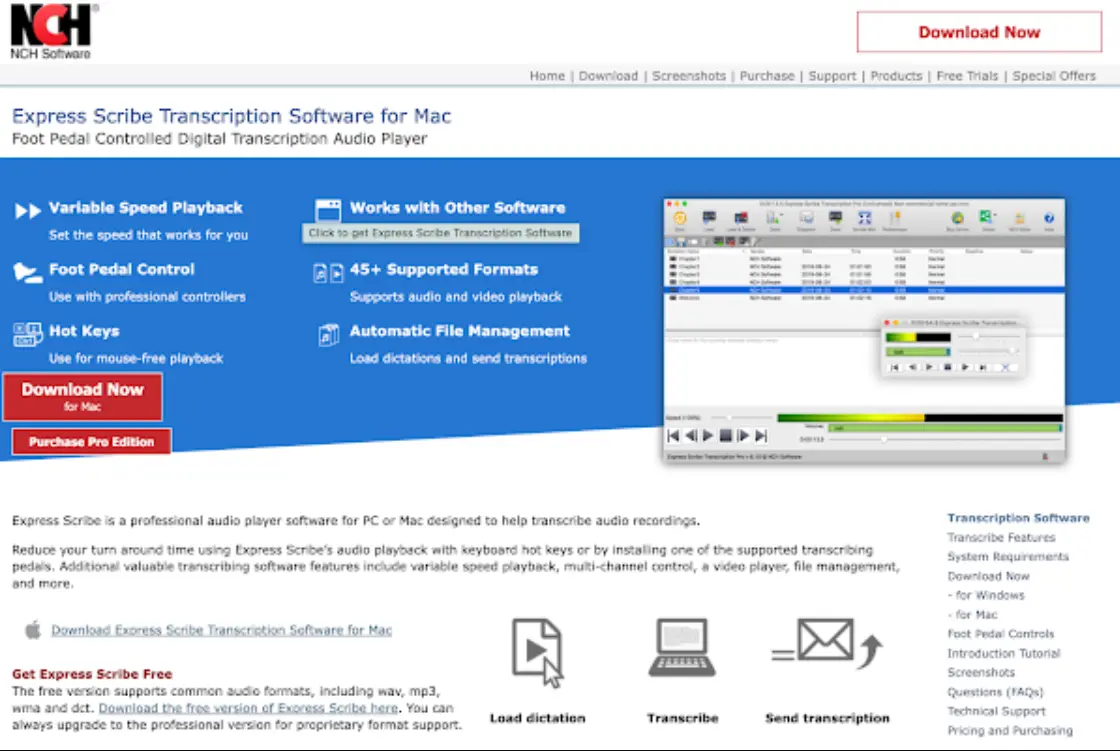
Express Scribe is a specialized software tool designed to facilitate manual transcription of audio recordings, catering to professionals in fields such as journalism, medical transcription, and legal documentation.
It offers essential features like foot pedal control and variable speed playback to enhance transcription efficiency.
Key Features
1. Audio Format Support: Compatible with a wide range of audio formats, including encrypted dictation files, ensuring versatility in handling different types of recordings.
2. Hotkeys: Enables mouse-free playback, particularly useful when transcribing directly into applications like Microsoft Word, through customizable hotkeys.
3. Integrations: Seamlessly integrates with major word processors and other business systems, streamlining the transcription workflow.
Pricing
Basic Plan: Available for $39.95.
Professional Plan: Priced at $49.99.
User Feedback
Positive:
Users appreciate the software's customizable features, such as the ability to adjust rewind, play, pause, and forward buttons, along with the option to increase recording volume up to 200x.
Negative:
Some users express dissatisfaction with the lack of customer support options, particularly the absence of a phone number for quick responses.
Express Scribe stands out as a reliable ASR tool, offering essential functionalities tailored to the needs of transcription professionals across various industries.
7. Mozilla
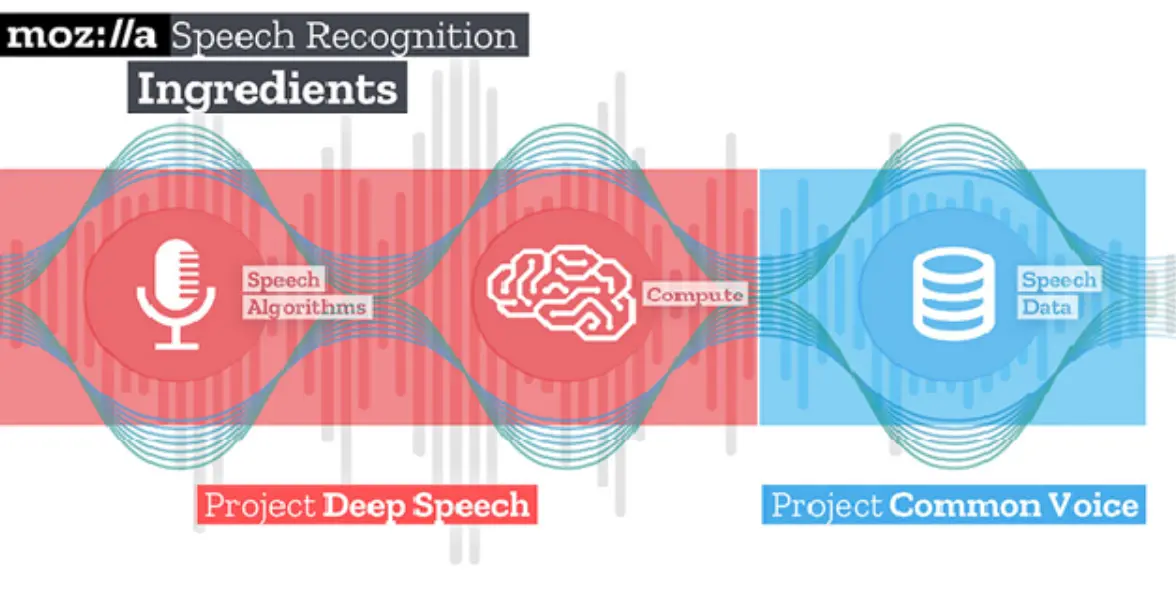
Mozilla has introduced an open-source voice recognition tool, boasting performance that is "close to the human level."
This free speech recognition software is designed for developers to seamlessly integrate into their projects, aligning with Mozilla's belief in making technology open and accessible to all, including voice-based interfaces.
Key Features
1. Project Common Voice: Mozilla's initiative encourages individuals to contribute recordings of their voices to an open repository, fostering the development of more inclusive and diverse speech recognition systems.
2. Simplified Software Architectures: Speech algorithms empower developers to create speech interfaces with significantly streamlined software architectures, enhancing usability and accessibility.
3. Mozilla DeepSpeech: An open-source TensorFlow-based speech-to-text processor renowned for its high accuracy, achieving a remarkable per-word error rate of approximately 6.5%.
4. Utilization of Open Source Code and TensorFlow: The ASR engine leverages open-source code algorithms and the TensorFlow machine learning toolkit, ensuring transparency and facilitating further development and customization.
5. Privacy Awareness and Hardware Optimization: Mozilla prioritizes privacy concerns and leverages powerful hardware to enhance the performance and efficiency of its speech recognition tool.
6. Multilingual Support: The DeepSpeech project offers support for various languages, including Python (3.6), enabling rapid integration and deployment in diverse linguistic environments.
Mozilla's ASR tool represents a significant advancement in speech recognition technology, offering developers a versatile and accessible platform to build innovative voice-enabled applications and interfaces.
Conclusion
Speech recognition technology has revolutionized the way we interact with machines, enabling them to understand and interpret human speech accurately.
The various speech recognition tools discussed offer a wide range of benefits, including streamlined business processes, cost efficiency, enhanced accuracy and speed, and accessibility.
Whether it's transcribing audio recordings, automating tasks, or facilitating communication, these tools empower users to harness the power of speech for improved productivity and efficiency in various fields.
As technology continues to evolve, speech recognition tools will play an increasingly vital role in shaping the future of human-machine interaction.
Read our other listicles:
1. 6 Best Data Curation Tools for Computer Vision in 2024
2. 6 Best Image Recognition Tools in 2024
Frequently Asked Questions
1. What is automatic speech recognition (ASR)?
Automatic Speech Recognition (ASR) is a technology that enables computers to understand and transcribe spoken language into text or commands without human intervention.
It allows users to communicate with devices using their voice, facilitating hands-free interaction and enabling applications such as virtual assistants, voice-controlled devices, and speech-to-text transcription services.
2. How does speech recognition software work?
Speech recognition software operates through a series of intricate processes to transform spoken language into text or commands that computers can comprehend.
Initially, the software receives audio input, typically via a microphone or recording device.
This input undergoes preprocessing, which involves tasks such as noise reduction and volume normalization to enhance clarity.
Subsequently, the software extracts various features from the audio, including frequency and duration, which are then mapped to phonemes through acoustic modeling.
Concurrently, language models are applied to interpret sequences of phonemes and determine the most probable words or phrases spoken.
Through statistical algorithms or neural networks, the software decodes the audio input, generating transcribed text or recognized commands.
This output is then available for further processing or action by the computer or relevant application.
Overall, speech recognition software leverages sophisticated algorithms and machine learning techniques to accurately interpret and transcribe spoken language, facilitating seamless interaction between users and technology.
Book our demo with one of our product specialist
Book a Demo